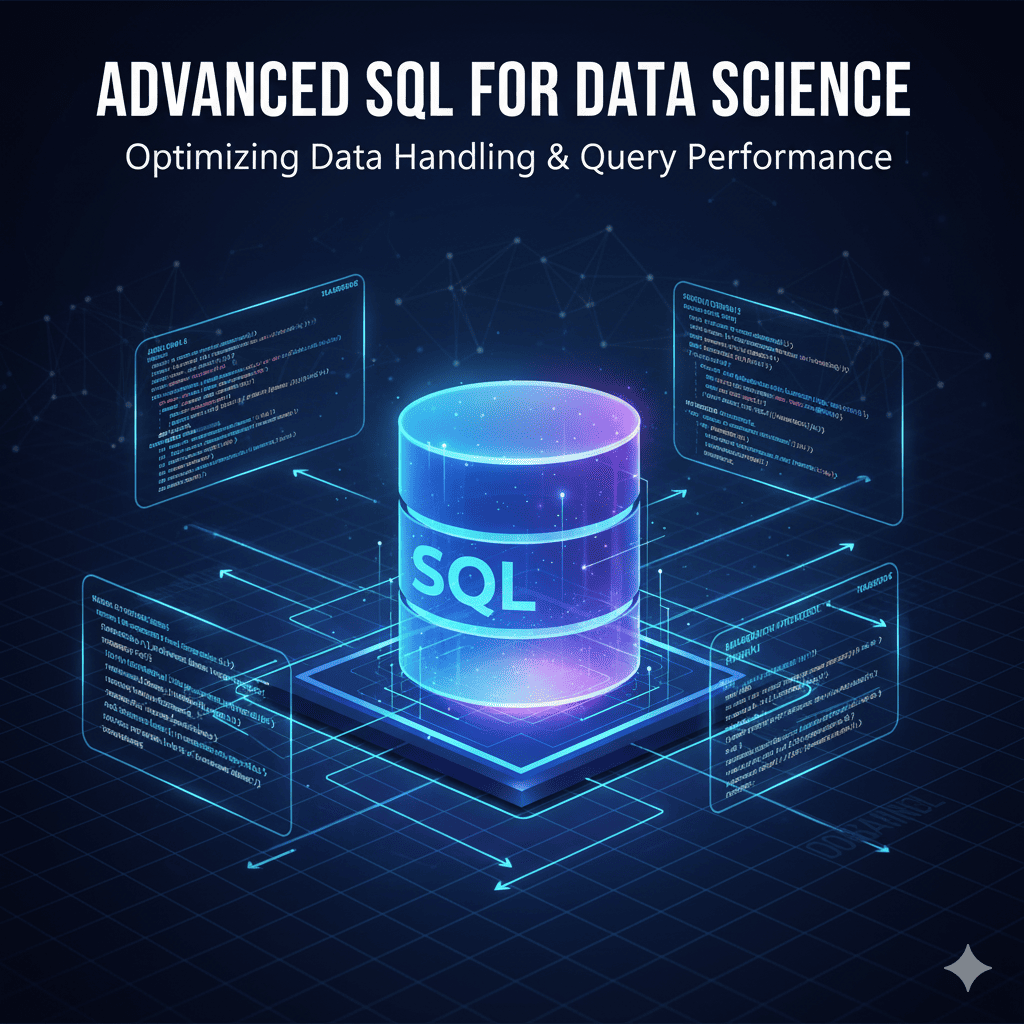In today’s data-driven world, SQL (Structured Query Language) remains the foundation of data management and analytics. While basic SQL skills are essential for any data professional, mastering advanced SQL techniques can significantly enhance efficiency in data handling, query performance, and overall analytical accuracy. This blog explores advanced SQL concepts and best practices for optimizing data operations in data science.
Read More: Advanced SQL for Data Science: Optimizing Data Handling and Query Performance
Why Advanced SQL Matters in Data Science
Data scientists often work with large, complex datasets that require powerful tools for data extraction, cleaning, and analysis. Advanced SQL skills enable professionals to process huge amounts of data efficiently, automate repetitive tasks, and uncover insights faster. Whether working with relational databases, data warehouses, or cloud platforms like BigQuery or Snowflake, SQL remains a vital skill for handling data effectively at scale.
1. Optimizing Queries for Better Performance
Inefficient queries can drastically slow down analysis, especially when dealing with millions of records. To improve performance, it’s essential to understand how databases execute queries and how to fine-tune them.
-
Use Indexes Strategically: Indexes speed up data retrieval but can slow down write operations if overused. Apply them selectively to columns frequently used in filtering or joining.
-
Select Only What You Need: Instead of retrieving all columns, specify only those required for your analysis. This minimizes the amount of data processed and transmitted.
-
Choose Joins Carefully: Use the appropriate join type (inner, left, right, or full) based on your data needs, and ensure the columns used for joining are indexed.
-
Filter Early: Apply filters as early as possible in your queries to limit the number of rows before aggregation or joining.
These strategies not only boost performance but also reduce processing costs, especially when working with cloud-based or large-scale data systems.
2. Using Window Functions for Advanced Analysis
Window functions are a powerful feature of advanced SQL. They allow analysts to perform calculations across sets of rows that are related to the current row, without collapsing data into aggregated results.
These functions are ideal for ranking data, calculating running totals, or comparing current values to previous ones—tasks often required in time-series analysis and business intelligence. For instance, a data scientist can easily identify month-over-month growth, customer churn rates, or performance rankings using window functions.
They simplify complex analytical problems and provide deeper insights while maintaining data granularity.
3. Mastering Subqueries and Common Table Expressions (CTEs)
Subqueries and Common Table Expressions (CTEs) make complex SQL queries easier to read, debug, and manage.
-
Subqueries are useful for filtering or aggregating data dynamically, allowing you to embed one query inside another.
-
CTEs use temporary result sets to structure queries logically. They help break down complex operations into smaller, more manageable steps.
By using CTEs, data scientists can design queries that are cleaner, more readable, and easier to maintain—especially when dealing with multi-step transformations or calculations.
4. Leveraging SQL for Data Cleaning and Transformation
Data cleaning is one of the most time-consuming tasks in data science, and SQL is an excellent tool for this process.
SQL’s built-in functions allow you to:
-
Standardize text data using string manipulation functions.
-
Work with date and time fields effectively through date-related functions.
-
Categorize or modify data conditionally using CASE statements.
Performing these cleaning and transformation tasks directly in SQL ensures that the data is consistent, structured, and ready for analysis before it reaches machine learning or visualization tools.
5. Best Practices for Scalable Data Handling
Handling big data efficiently requires a strong understanding of database optimization techniques. Key practices include:
-
Using partitioning and clustering to improve query speed on large tables.
-
Regularly updating database statistics to assist query planners.
-
Caching frequent queries to save computation time.
-
Monitoring query execution plans to detect and fix performance issues.
These practices help maintain optimal query performance as datasets grow in size and complexity.
Visit Here: https://www.fusion-institute.com/mastering-sql-for-data-science-efficiently-managing-and-querying-data
Conclusion
Mastering advanced SQL for data science goes far beyond writing queries—it’s about optimizing how data is stored, retrieved, and analyzed. By applying advanced techniques like indexing, window functions, CTEs, and data cleaning strategies, data scientists can handle data more efficiently, uncover insights faster, and ensure their analyses scale effectively. In the end, advanced SQL knowledge transforms raw data into actionable intelligence—empowering data scientists to make smarter, faster, and more impactful decisions.

